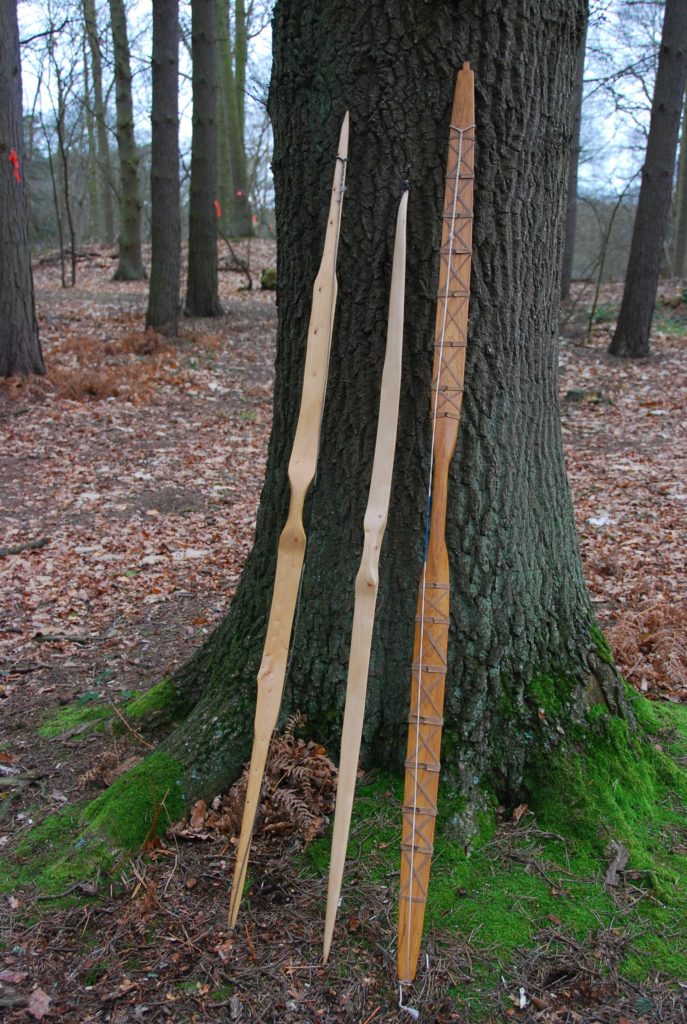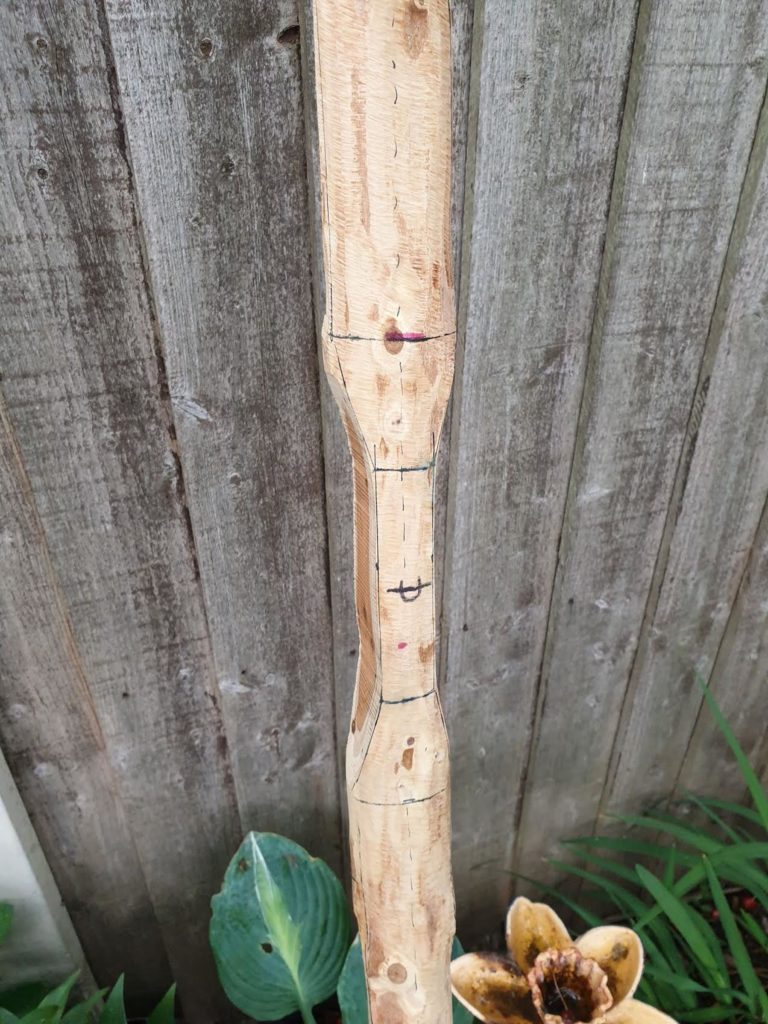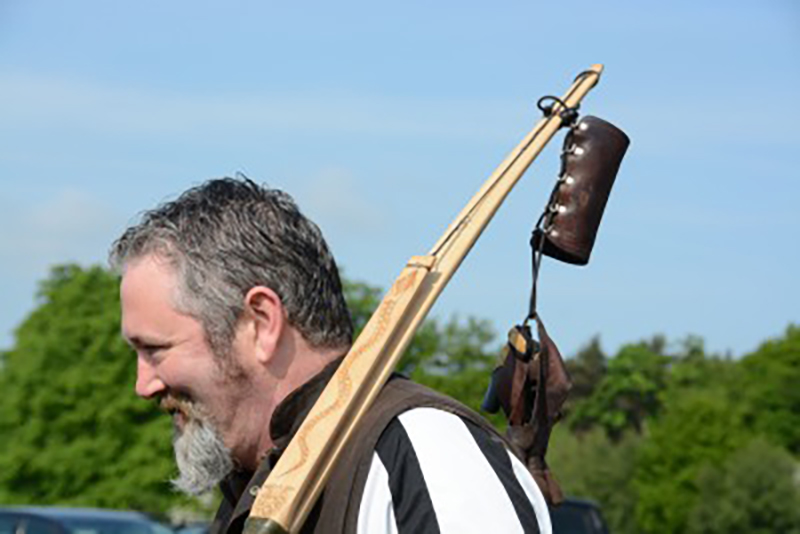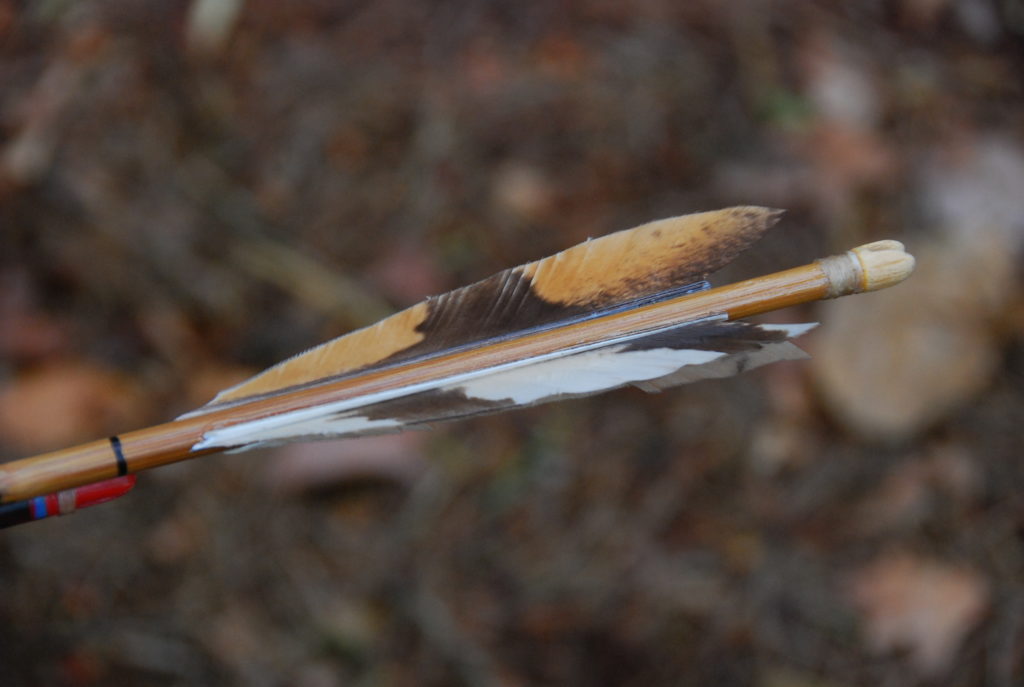What’s it like to compete with something you’ve made yourself? By Alex Tyler.
Watching a repeat on television, you can often tell how much time has passed since the programme was made by looking at the technology used. Seeing the boxy cars of the sixties, the massive mobile phones of the eighties, and the clunky laptops of a decade or so ago reminds us of technological progress.
Within field archery however, there are bowyers and archers who celebrate historical bow designs. The Primitive category is for bows which replicate ancient designs, and are made of entirely natural materials (though for safety reasons, modern glues and synthetic bowstrings are allowed).

The history of archery goes back a long way, with the earliest known arrowheads found in South Africa and estimated to be 60 – 70,000 years old.
The technology developed in a number of civilisations, used for warfare and hunting with equipment made from materials which could be obtained locally or through local trade.
The tomb of the Egyptian boy-pharaoh, Tutankhamen, contained a number of bows, of two distinct types. Some resembled longbows with a single curve, others had recurved tips to the limbs, which were made from layers of ash, cherry and birch.
Moving forward to the Copper Age, Ötzi, a hunter whose body was found preserved in an Austrian glacier in 1991, carried a yew longbow stave, which had been partially tillered. Comparing this to similar staves found on the Mary Rose, it has been estimated this would have a draw weight of 160 pounds when finished.
In his doeskin quiver were fourteen arrows made from the wayfaring tree, of which two were fully fletched with feathers attached with birch tar glue and bound with nettle fibres. The most recent research has discovered Ötzi carried the earliest known bow string, made of three twisted strands of animal sinews.
Sinew was also used to reinforce bows and reduce the likelihood of them breaking when drawn. This was particularly important when wood was in short supply and the technique was used by the Inuit and enabled them to make effective bows from driftwood or antler.
The bows developed by a number of Asiatic cultures were designed to be shot from horses, so were shortened, the power deriving from glued layers of horn and flexible woods such as bamboo.
By around 1900, there was even a proto-compound bow, the Penobscot, named after the indigenous people of the eastern woodlands in what is now Maine. The bow consists of two joined sets of limbs, with a long stave backed by a smaller one.
In addition to the normal bow string, the limbs of the smaller stave are joined by strings to the tips of the longer, so when the bow is drawn, both sets bend. This gives the bow both additional power and resistance and allows draw length and weight to be adjusted by altering the strings.
This rich history means that for an archer wanting to shoot Primitive, there is a huge choice of styles available. I spoke to Pat Morrow, an NFAS archer about what encouraged him to shoot primitive style and how he chose which bow to make.
“I’ve been shooting about thirteen years and in that time I’ve shot almost all types of recurve bow, with and without sights. I’ve even had a go with crossbow. I much prefer primitive class, as I am more relaxed and although I still enjoy competing, winning a medal does not matter as much as it did when I shot other styles, particularly barebow.” he said.
Why is that? “There is something that just feels right about being out in the woods with a bow you have made yourself. Shooting now is more about the experience and the challenge comes against myself, getting a good score.

There is also the point that you don’t know who you will be up against – you could be shooting against someone with a horsebow or a Japanese bow. There is a lot of interest in seeing what other archers have made and what techniques they used.”
What changes have you had to make to your style? “When I started shooting this bow, I found it hardest to adjust to the relatively slow speed and the time it took for the arrow to straighten up. This can be a problem when shooting through obstacles close to the peg because in NFAS, you often have obstructed shots.”
“My style has also changed in that I’m a lot more instinctive in my shooting and a lot more relaxed. I needed to get some new equipment because I now use a glove on my bow hand to prevent getting fletchings stuck through my finger, and I always wear a bracer.”
Pat is currently shooting a laminated flatbow, without shelf or rest, made of bamboo, black walnut and rock maple. “I was drawn to the flatbow because of its basic design and it was easy to make. I have always worked with wood and have access to the tools.

“The most complicated part was tillering, making sure that the bow was balanced and needed to check the draw weight regularly, to make sure I hadn’t taken too much off. I’ve also tried shooting with a Penobscot bow and loved the smooth release. That was one I’ve bought though – making one would be a real challenge.”
The NFAS recognised primitive bows as a distinct class from April 2007, following a membership vote. To recognise the broad range of styles used by ancient archers, any type of hand loose can be used, including a thumb ring.
The class, while still small, has grown steadily since. If you want to try the Primitive class before committing, there are bowyers who sell bows which qualify for the class, although you should speak to them first to check these confirm with NFAS guidelines.
For example, if a bow confirms to longbow guidelines, then it must be shot in that class. No arrow shelf is permitted and all arrows must be shot off the hand.
If you are ready to make your own bow, ready-cut staves can be bought, to give an introduction to tillering before moving to designing and making the equipment.

Also, your arrows must also be self-nocked, as plastic nocks are not permitted. (A brief aside: because his arrows appeared to have plastic nocks, Legolas, the elf archer in the ‘Lord Of The Rings’ films would have been politely told he would have to shoot in Hunting Tackle class.)
Whichever way you choose to shoot, the experience will be vastly different from shooting a modern bow. A self-made Primitive bow, with all of the echoes of archery’s past and the associated craftsmanship, is always going to provide for a deeper experience.

